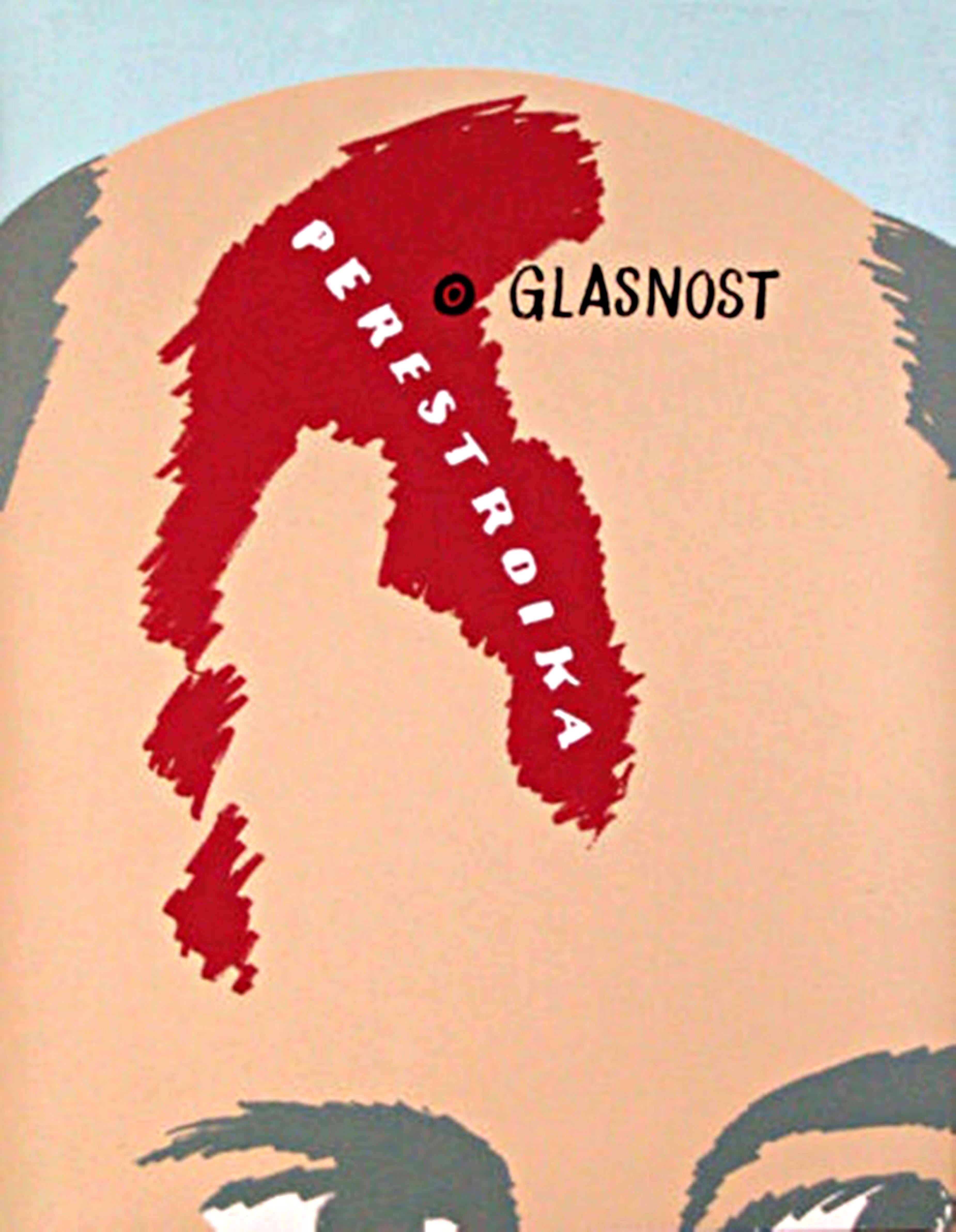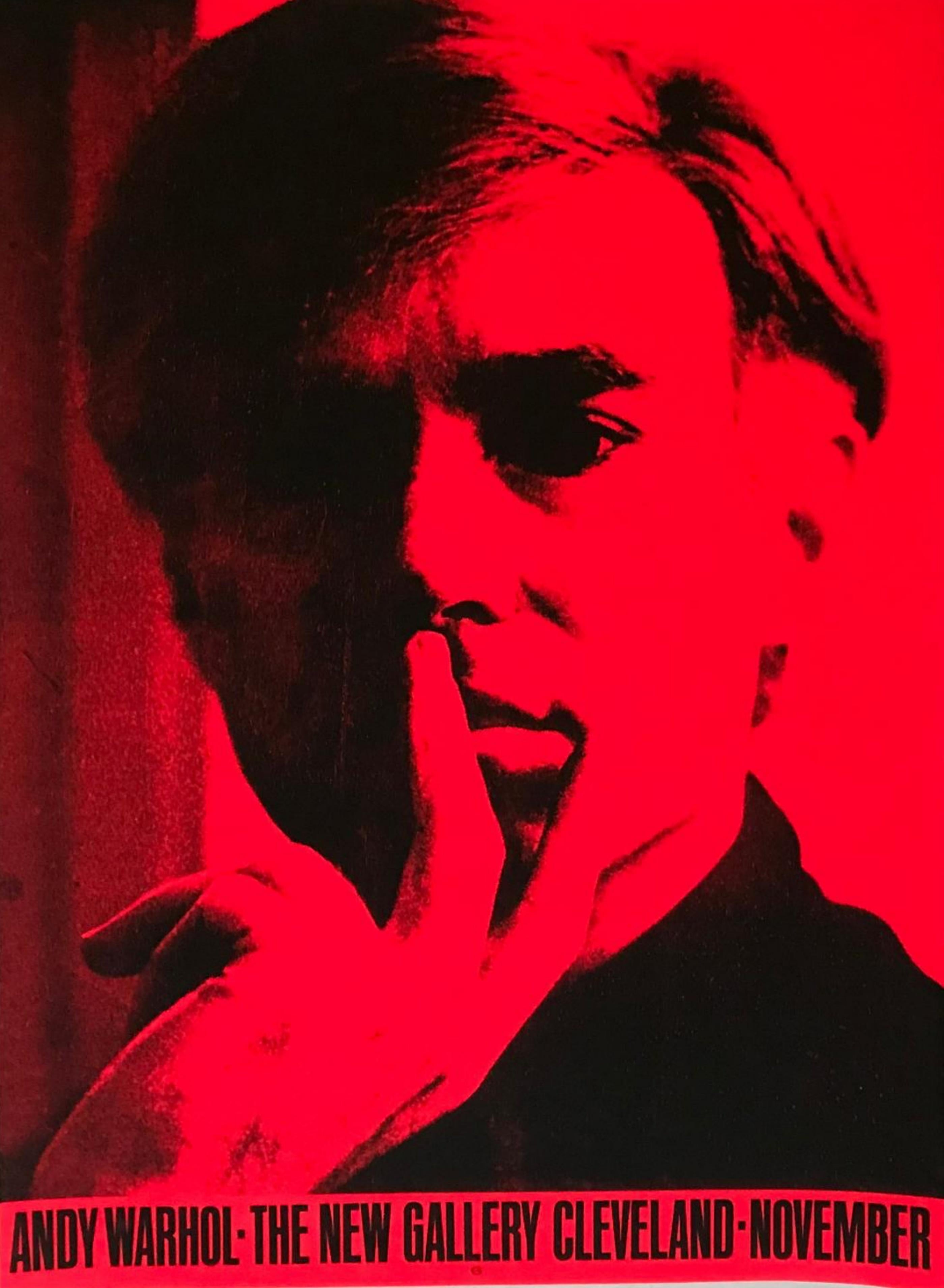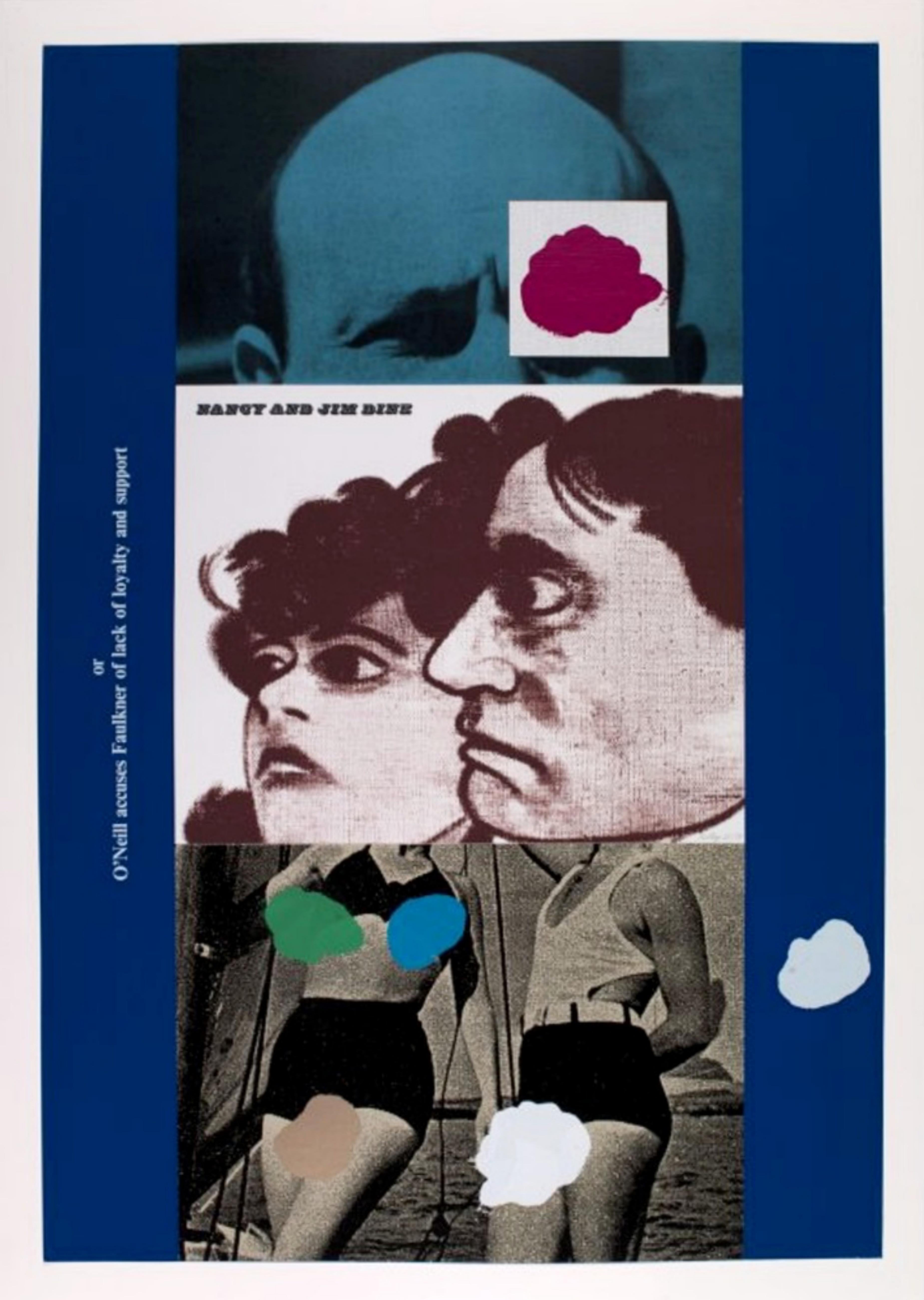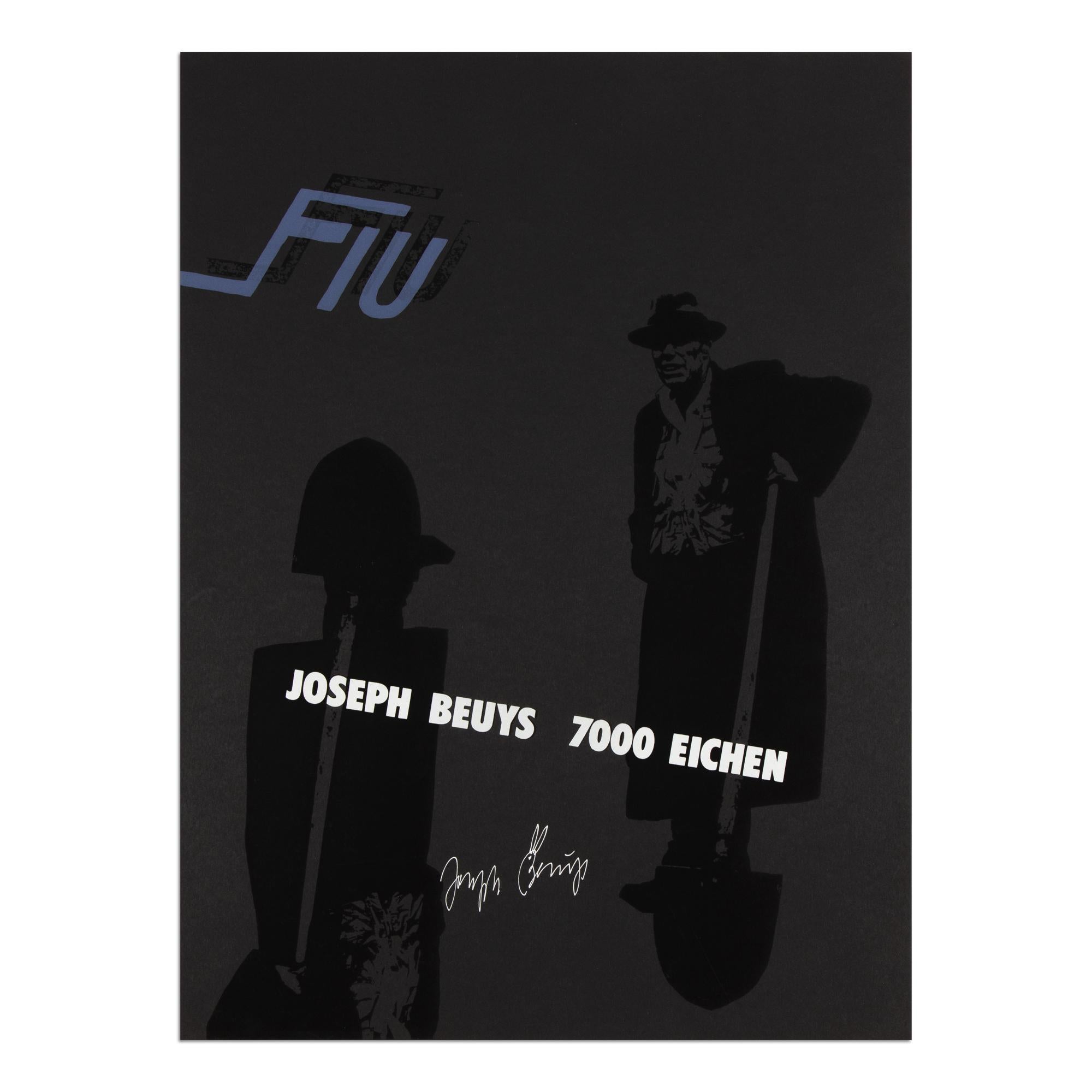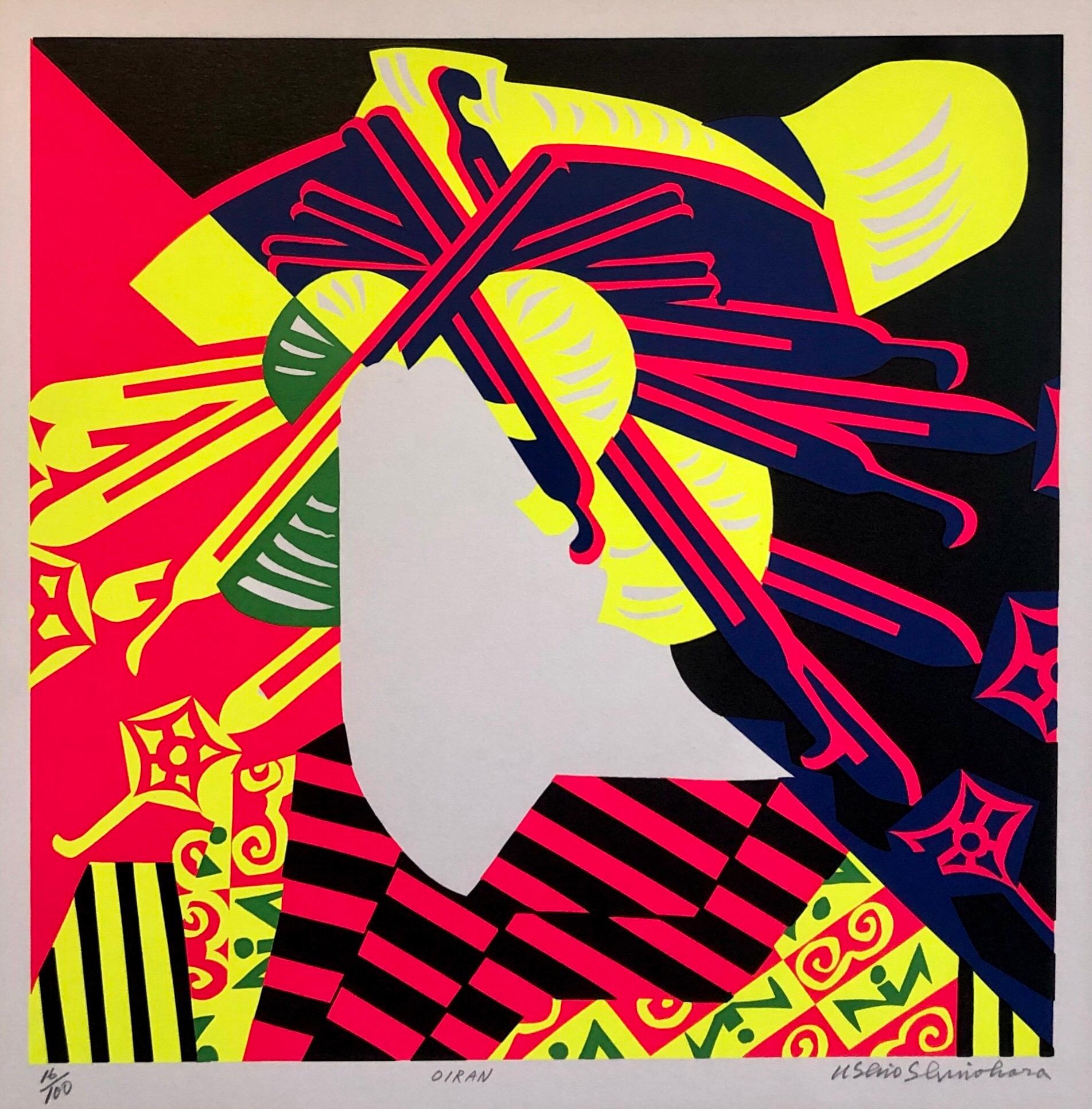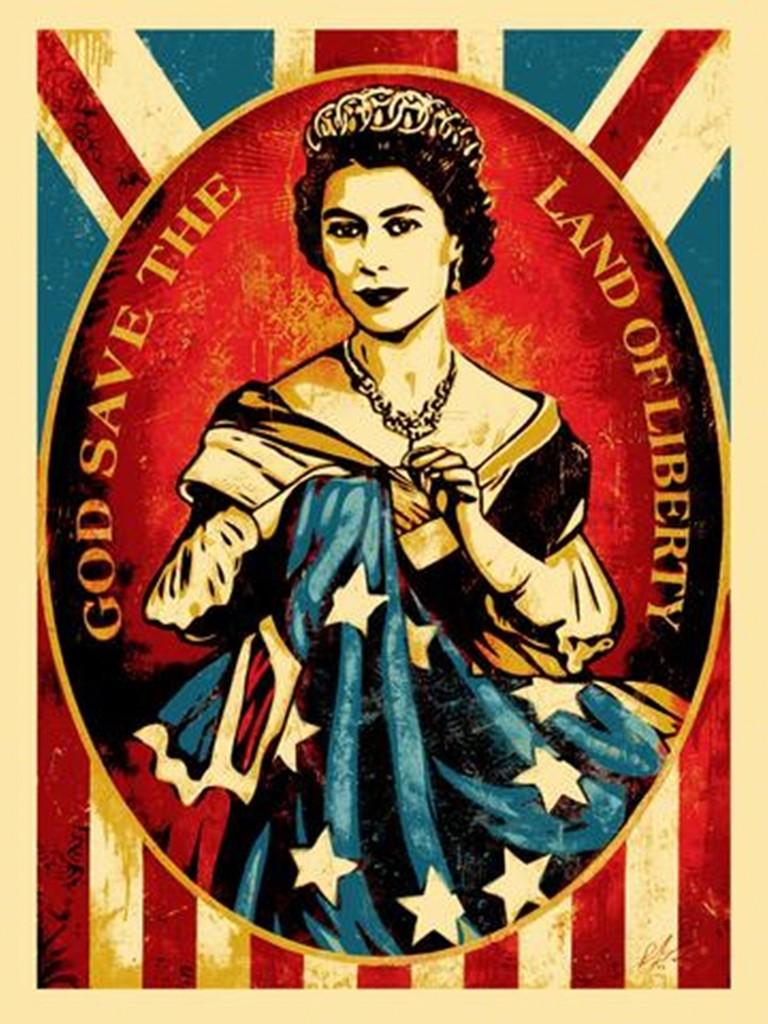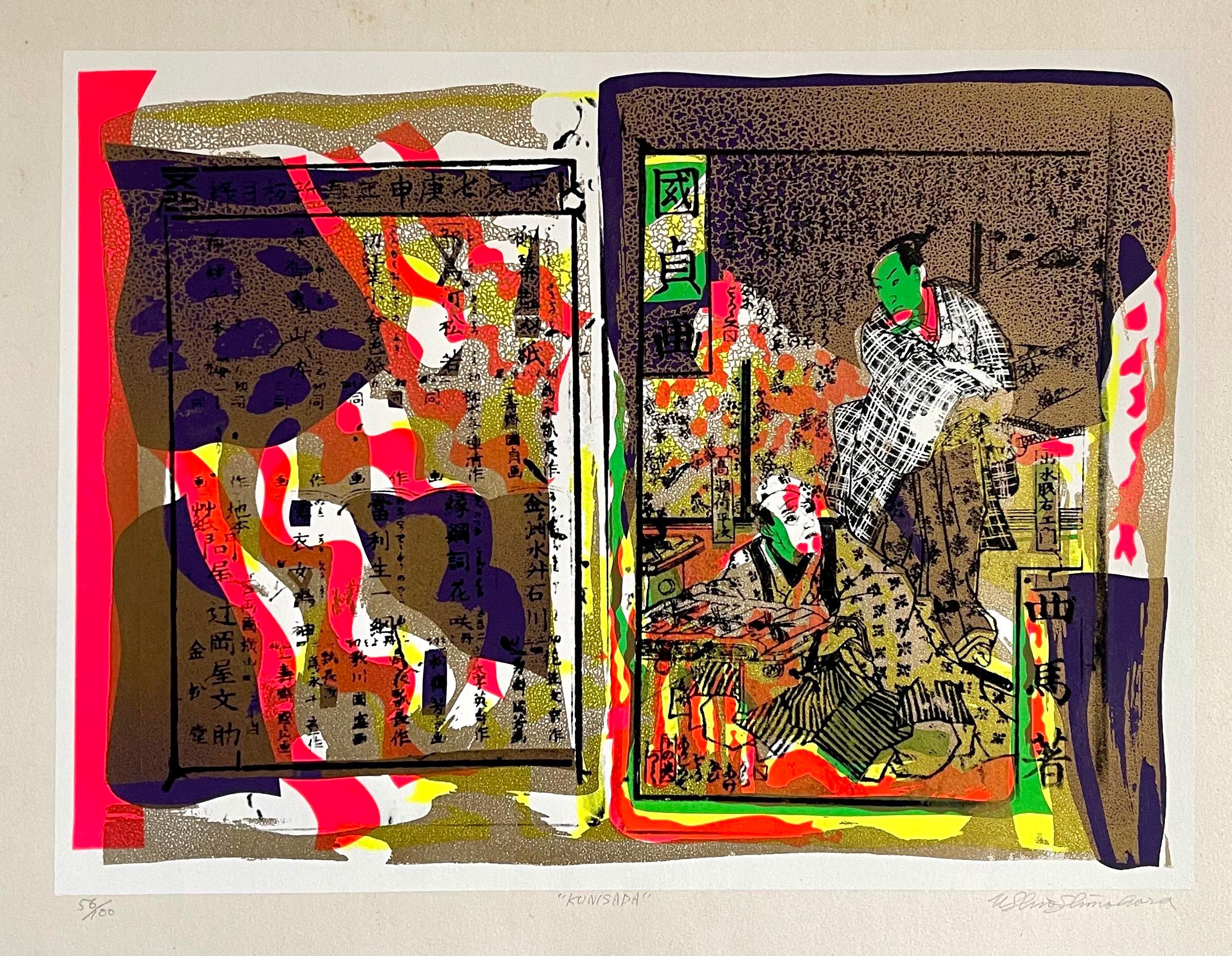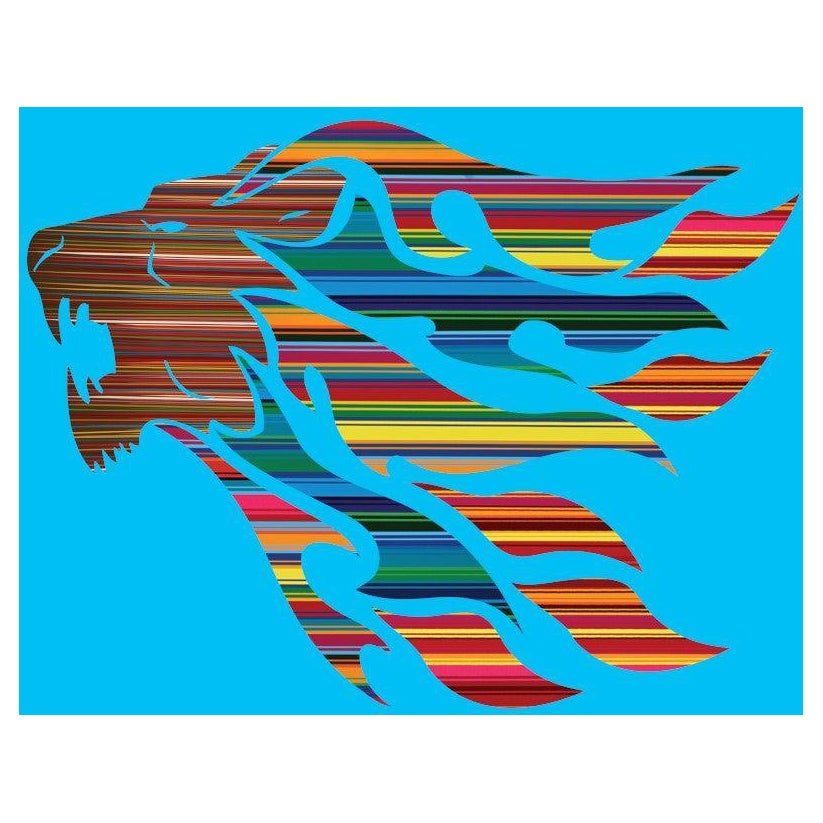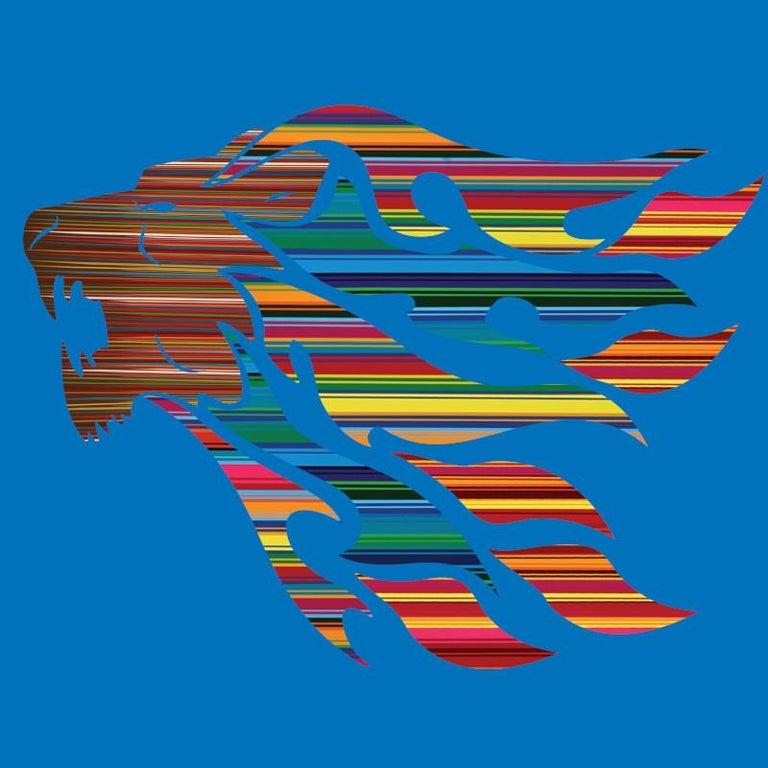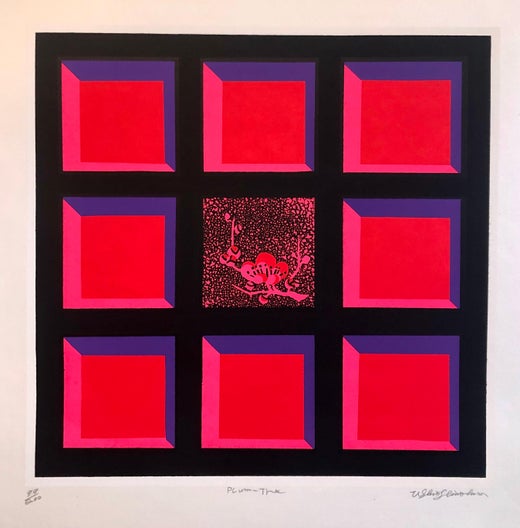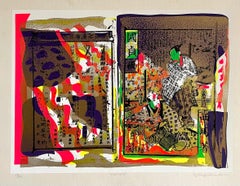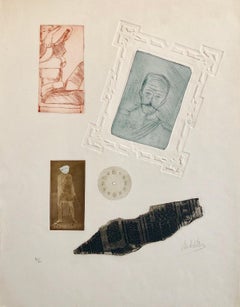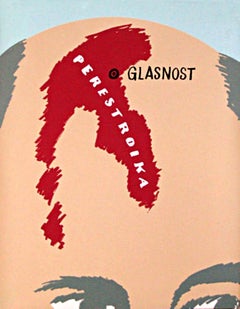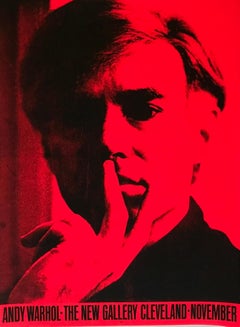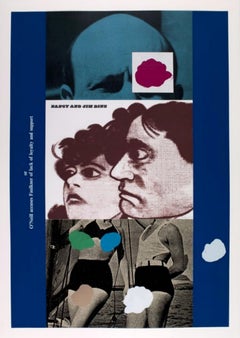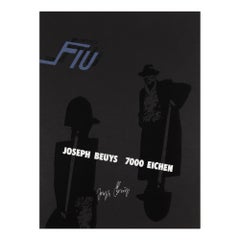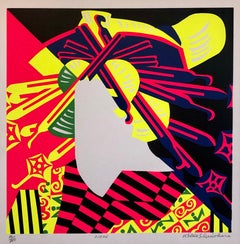
Silkscreen Oiran Day Glo Fluorescent 1960's Japanese Pop Art Print Geisha Kimono
View Similar Items
Want more images or videos?
Request additional images or videos from the seller
1 of 11
Ushio ShinoharaSilkscreen Oiran Day Glo Fluorescent 1960's Japanese Pop Art Print Geisha Kimonoc.1969
c.1969
$2,200List Price
About the Item
- Creator:Ushio Shinohara (1932, Japanese)
- Creation Year:c.1969
- Dimensions:Height: 17 in (43.18 cm)Width: 13.5 in (34.29 cm)
- Medium:
- Movement & Style:
- Period:
- Condition:light toning where it was matted. please se photos.
- Gallery Location:Surfside, FL
- Reference Number:1stDibs: LU3827386842
Ushio Shinohara
Ushio Shinohara, nicknamed Gyu-chan, is a Japanese Neo-Dadaist artist. His bright, large work has been exhibited internationally at institutions including the Hara Museum of Contemporary Art, Centre Georges Pompidou, the Guggenheim Museum SoHo, National Museum of Modern Art, Tokyo, Leo Castelli Gallery, New York, Museum of Contemporary Art, Los Angeles and The Metropolitan Museum of Art, Seoul, The Tate Modern- World Goes Pop Exhibition. Shinohara and his wife, Noriko, are the objects of a documentary film by Zachary Heinzerling called Cutie and the Boxer (2013).
About the Seller
4.9
Platinum Seller
Premium sellers with a 4.7+ rating and 24-hour response times
Established in 1995
1stDibs seller since 2014
1,777 sales on 1stDibs
Authenticity Guarantee
In the unlikely event there’s an issue with an item’s authenticity, contact us within 1 year for a full refund. DetailsMoney-Back Guarantee
If your item is not as described, is damaged in transit, or does not arrive, contact us within 7 days for a full refund. Details24-Hour Cancellation
You have a 24-hour grace period in which to reconsider your purchase, with no questions asked.Vetted Professional Sellers
Our world-class sellers must adhere to strict standards for service and quality, maintaining the integrity of our listings.Price-Match Guarantee
If you find that a seller listed the same item for a lower price elsewhere, we’ll match it.Trusted Global Delivery
Our best-in-class carrier network provides specialized shipping options worldwide, including custom delivery.More From This Seller
View AllSilkscreen Oiran Day Glo Fluorescent 1960's Japanese Pop Art Print Geisha Kimono
By Ushio Shinohara
Located in Surfside, FL
Ushio Shinohara (born 1932, Tokyo), nicknamed “Gyu-chan”, is a Japanese Neo-Dadaist artist. His bright, large work has been exhibited internationally at institutions including the Hara Museum of Contemporary Art, Centre Georges Pompidou, the Guggenheim Museum SoHo, National Museum of Modern Art, Tokyo, Leo Castelli Gallery, New York, Museum of Contemporary Art, Los Angeles and The Metropolitan Museum of Art, Seoul and others. Shinohara and his wife, Noriko, are the subjects of a documentary film by Zachary Heinzerling called Cutie and the Boxer (2013).
Shinohara's parents instilled in him a love for painters such as Paul Cézanne, Vincent Van Gogh and Paul Gauguin. His father was a tanka poet who was taught by Wakayama Bokusui. Shinohara’s mother was a painter who went to the Woman’s Art University (Joshibijutsu Daigaku) in Tokyo.
In 1952 Shinohara entered the Tokyo Art University (later renamed to Tokyo University of the Arts), majoring in oil painting, however he left before graduation in 1957.
In 1960 Shinohara participated in a group called "Neo-Dada Organizers". (Masunobu Yoshimura, Genpei Akasegawa, Shusaku Arakawa, Ushio Shinohara, Sho Kazakura, Tomio Miki, Tetsumi Kudo...
Category
1960s Pop Art Abstract Prints
Materials
Screen
Silkscreen Day Glo Fluorescent 1960's Japanese Pop Art Print Samurai Kimono
By Ushio Shinohara
Located in Surfside, FL
Ushio Shinohara (born 1932, Tokyo), nicknamed “Gyu-chan”, is a Japanese Neo-Dadaist artist. His bright, large work has been exhibited internationally at institutions including the Hara Museum of Contemporary Art, Centre Georges Pompidou, the Guggenheim Museum SoHo, National Museum of Modern Art, Tokyo, Leo Castelli Gallery, New York, Museum of Contemporary Art, Los Angeles and The Metropolitan Museum of Art, Seoul and others. Shinohara and his wife, Noriko, are the subjects of a documentary film by Zachary Heinzerling called Cutie and the Boxer (2013).
Shinohara's parents instilled in him a love for painters such as Paul Cézanne, Vincent Van Gogh and Paul Gauguin. His father was a tanka poet who was taught by Wakayama Bokusui. Shinohara’s mother was a painter who went to the Woman’s Art University (Joshibijutsu Daigaku) in Tokyo.
In 1952 Shinohara entered the Tokyo Art University (later renamed to Tokyo University of the Arts), majoring in oil painting, however he left before graduation in 1957.
In 1960 Shinohara participated in a group called "Neo-Dada Organizers". (Masunobu Yoshimura, Genpei Akasegawa, Shusaku Arakawa, Ushio Shinohara, Sho Kazakura, Tomio Miki, Tetsumi Kudo...
Category
1960s Pop Art Abstract Prints
Materials
Screen
French Modernist Abstract Portrait Lithograph (After Jasper Johns)
By André Cottavoz
Located in Surfside, FL
Born in 1922 in Saint-Marcellin, in Isère, André Cottavoz studied at the École des Beaux-Arts in Lyon in 1939. In 1942, Cottavoz at 20 years, he is in class 22 and must go to the Com...
Category
1960s Abstract Abstract Prints
Materials
Lithograph
Portraits Erotic Vignettes French Israeli Surrealist Aquatint Etching Le Colonel
By Zvi Milshtein
Located in Surfside, FL
Etching and Aquatint with embossing featuring a clock, the colonel, a nude woman undressing and a figure. This is numbered by hand in pencil and signed in pencil.
Zwy Milshtein (Zvi ...
Category
20th Century Expressionist Portrait Prints
Materials
Etching, Aquatint
Zohar Kabbalah Portrait French Jewish Surrealist Aquatint Etching Hebrew Judaica
By Zvi Milshtein
Located in Surfside, FL
Etching and Aquatint with embossing, Zwy Milshtein (Zvi Tzvi Milstein) BIOGRAPHY 1934 Born in Kishinev (Bessarabia) Russian, Romanian region.
1948 Arrived in Israel via Cyprus, wher...
Category
20th Century Expressionist Portrait Prints
Materials
Etching, Aquatint
Portrait of Woman on Typeface French Jewish Surrealist Aquatint Etching Judaica
By Zvi Milshtein
Located in Surfside, FL
Etching and Aquatint with embossing, This is numbered by hand in pencil but does not appear to be signed.
Zwy Milshtein (Zvi Tzvi Milstein) BIOGRAPHY 1934 Born in Kishinev (Bessarab...
Category
20th Century Expressionist Portrait Prints
Materials
Etching, Aquatint
You May Also Like
Gorbachev's Head (Perestroika/Glasnost aka Gorby's Head) SIGNED by Chermayeff
By Ivan Chermayeff
Located in New York, NY
IVAN CHERMAYEFF
Perestroika/Glasnost (Aka Gorby's Head), 1991
Silkscreen on wove paper
Hand signed in pencil by Ivan Chermayeff. One of only a handful of known signed copies.
Unframe...
Category
1990s Pop Art Abstract Prints
Materials
Screen
Historic LtEd Exhibition Poster for 1971 Andy Warhol Show New Gallery Agnes Gund
Located in New York, NY
Poster designed Martin Szufter with the approval of Andy Warhol, using an image of a Warhol work from the exhibition
The New Gallery, 1971
Silkscreen on paper
24 × 17 1/2 inches
Unfr...
Category
1970s Pop Art Portrait Prints
Materials
Screen
O'Neill accuses Faulkner of lack of loyalty and support (Nancy & Jim Dine)
By R.B. Kitaj
Located in New York, NY
Ronald B. (R.B.) Kitaj
Nancy and Jim Dine, or O'Neill accuses Faulkner of lack of loyalty and support (Kinsman 40), 1970
16 Color Silkscreen with collage and coating on different wove papers
Hand signed and numbered in pencil 29/70 on the front. The back (which is framed) bears the Kelpra Studio blindstamp
Frame included: held in the original vintage metal frame
Very rare stateside. Other editions of this work are in the permanent collections of major institutions like the British museum, which has the following explanation: "The artist Jim Dine and his wife Nancy were close to Kitaj and his family, especially after the death of Elsi, Kitaj's first wife in 1969. They sometimes stayed with the Dines at their farm in Vermont during Kitaj's second teaching sojourn in the United States. Dine and Kitaj held a joint show at the Cincinnati Museum of Art in 1973. In the catalogue both artists contributed an insightful 'essay' on each other with Dine stressing Kitaj's obsession with all things American and baseball-related...' The alternate title, "O'Neill accuses Faulkner of lack of loyalty and support" can be seen on the artwork itself, and clearly is some kind of inside joke among friends. By the way -- do you see the way the colored dots are placed over the figures? Kitaj was doing this well before Baldessari who made it famous; that's how pioneering he was at the time.
Referenced in the catalogue raisonne of Kitaj's prints, Kinsman, 40
Published and printed by Chris Prater of Kelpra Studio, Kentish Town, United Kingdom
Ronald Brooks (RB) Kitaj Biography
R.B. (Ronald Brooks) Kitaj was born in 1932 in Cleveland Ohio. One of the most prominent painters of his time, particularly in England where he spent some four decades spanning the late 1950s through the late 1990s, Kitaj is considered a key figure in European and American contemporary painting. While his work has been considered controversial, he is regarded as a master draughtsman with a commitment to figurative art. His highly personal paintings and drawings reflect his deep interest in history; cultural, social and political ideologies; and issues of identity.
Part of an extraordinary cohort who emerged from the Royal College of Art circa 1960, which included Peter Blake, Patrick Caulfield, and David Hockney, Kitaj was immediately pegged as one of its leading figures. The London Times greeted his first solo show in 1963 as a long-awaited and galvanizing event: “Mr. R.B. Kitaj’s first exhibition, now that it has at last taken place, puts the whole ‘new wave’ of figurative painting in this country during the last two or three years into perspective.” In 1976, KItaj curated the exhibition The Human Clay, and in the essay he wrote for it he proposed the existence of a “School of London”—a label which stuck to a group of painters that includes Francis Bacon, Frank Auerbach, Lucian Freud, Leon Kossoff, Michael Andrews...
Category
1970s Pop Art Portrait Prints
Materials
Mixed Media, Screen, Pencil
Joseph Beuys, FIU Joseph Beuys, 7000 Eichen - Signed Screenprint from 1982
By Joseph Beuys
Located in Hamburg, DE
Joseph Beuys (German, 1921-1986)
FIU Joseph Beuys, 7000 Eichen, 1982
Medium: Screenprint on black card stock
Dimensions: 61.5 x 45.8 cm
Edition of 100: Hand-signed in silver
Conditio...
Category
20th Century Pop Art Portrait Prints
Materials
Screen
Yes You Can Can (Splats Edition)
Located in Deddington, GB
Yes You Can Can (Splats Edition) by Amy Gardner [2020]
limited_edition
Screen Print, Watercolour
Edition number 40
Image size: H:50 cm x W:50 cm
Sold Unframed
Please note that insitu images are purely an indication of how a piece may look
This print is about women supporting women. 'YES YOU CAN CAN' splats edition limited edition of 40 Archival Bread & Butter bright white paper 270gsm 50x 50cms 5 screen...
Category
21st Century and Contemporary Pop Art Abstract Prints
Materials
Paper, Watercolor, Screen
Man Powered Airplane Solomon (Jun Rope)
By Yokoo Tadanori
Located in New York, NY
Tadanori Yokoo
Man Powered Airplane Solomon (Jun Rope), 1967
Silkscreen poster
41 x 29 inches (image)
44 1/4 x 32 1/2 x 1 1/2 inches (frame)
Signed and stamped with Artist's seal
Wh...
Category
1970s Pop Art Abstract Prints
Materials
Screen
Recently Viewed
View AllMore Ways To Browse
Japanese Geisha Vintage Art
1960s Kimono
Vintage Geisha Kimono
1960 Bikes
Japanese Paper Mache
Vintage Boxing Gloves
Geisha Screen
Geisha Photo
Nude Geisha
Paper Mache Abstract
Japanese Screen Geisha
Retro Rubber Gloves
Vintage Dumbo
Coca Cola Vintage Collectables
The 19th Century Trash Can
Josef Albers Folder 8
Julie Curtiss
Kano Mitsuo
